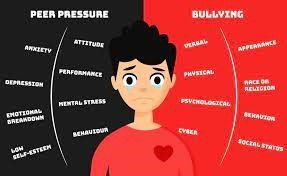Bullying Prevention: Is it the Parents or the Peers?
While some theorize that the parents are the source of the bullying, others look to the peers as the basis for it.

Bullying is a significant problem with youths, whether they are the target (victim) or the aggressor (bully). According to the National Center for Educational Statistics, 20% of students report being bullied. 41% of students bullied at school think it will happen again. The types of bullying differ. In the statistics, 13% were called names, 13% were the subject of rumors, 5% reported being physically assaulted, and 5% were excluded from activities.
To conduct bullying prevention activities, the onus for schools and professionals is to identify the source of the bullying. While some theorize that the parents are the source of the bullying, others look to the peers as the basis for it. Research suggests that it comes from both starting places equally. Many of the studies look at the type of attachment a youth has with parents or peers. Murphy et al. in 2017 indicated that “Individuals with secure attachments to parents and peers are less likely to be bullies and victims of bullying.” In surveys they conducted with adolescents about peer and parent attachment, they found that “having a secure attachment to peers may be a potentially protective factor against bullying involvement for males with insecure attachments to parents.” Chen et al., in 2021, found several factors that affected bullying. “Parental behavioral control,” the parent’s ability to supervise and interfere in their youth’s activities, was an essential factor. Also, “deviant peer affiliation” became a significant element as well, meaning the types of peers who might engage in aggression, cheating, and substance abuse. The study found that while parents had some impact in reducing bullying activity, the youths who engaged in antisocial behavior were more of an influence on bullying activity.
Both of these studies also show how attachment is a significant factor in bullying prevention. Studies by Bowlby on attachment showed a correlation between insecure attachment, low trust, and lack of empathy. These are factors that lead to poor connections with others and can be a breeding ground for bullying.
For professionals working with youths being bullied, several strategies can be used. Improving social skills and positive connections with youths leads them to be in a group where bullying is not tolerated, and a social support system can inoculate them from abuse. Plus, working with parents and their communication skills also improves their positive influence on the youth. Bullying prevention needs a two-pronged approach: improving peer-level interactions along with parental communication.




